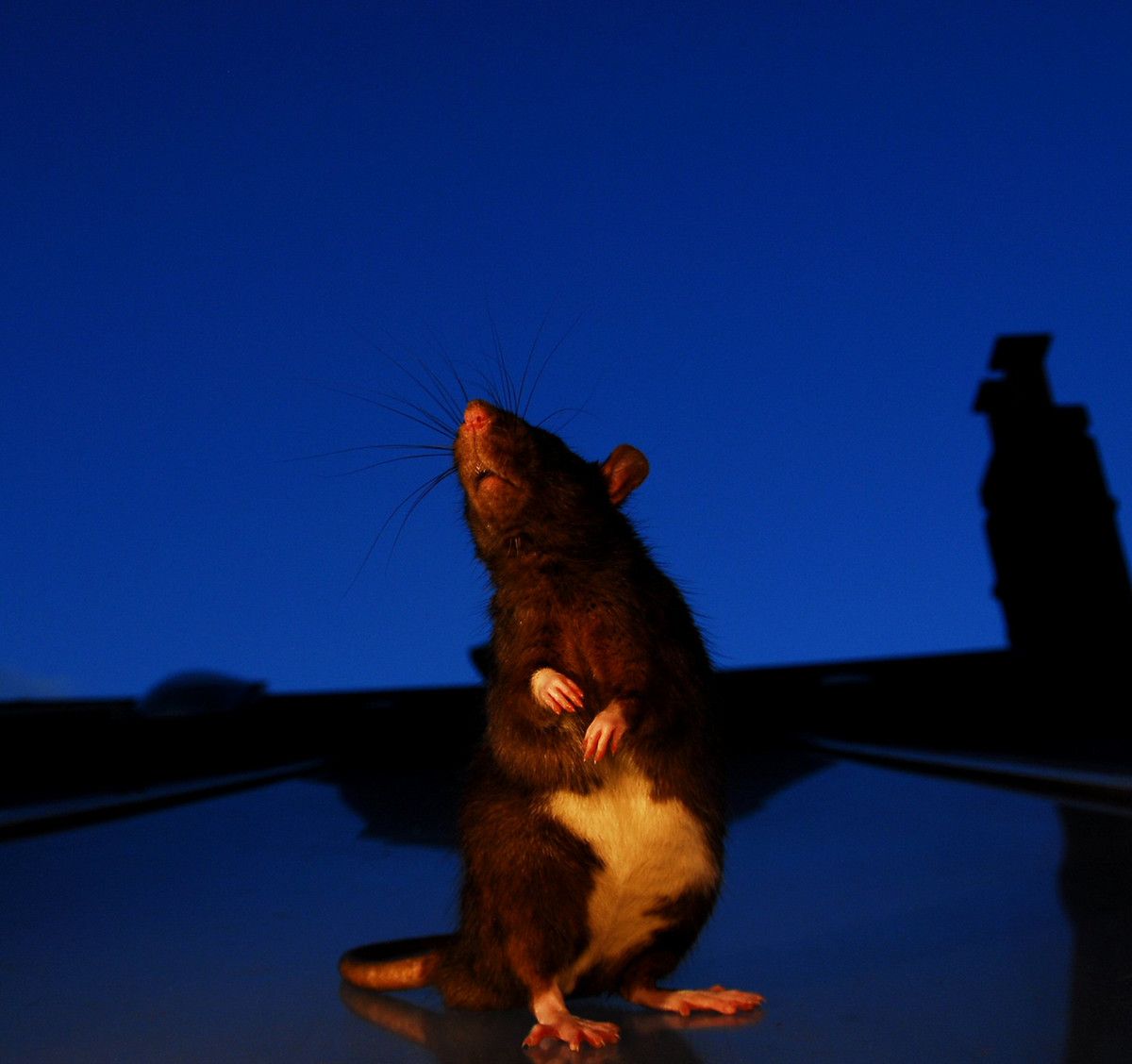Besides humans, many other animals play. Squirrels chase each other. Rats and monkeys wrestle and tickle each other. Researchers classify an animal behavior as play when it doesn’t involve an external reward, such as food, seems to serve no purpose, occurs repeatedly, and happens when the animal is relaxed and not facing threats.
Ethologists, scientists who study animal behavior, would like to know more about animal play. Neuroscientists seek its basis in the brain. Fortunately, rats are very playful and are a common laboratory animal. They can easily be lured to chase a human’s hand, much as they would another rat, and can be tickled by a human, much as another rat might. When playing or being tickled rats ‘laugh’ at sound frequencies too high for the human ear to hear.
In 2023 a team of neuroscientists from Germany published an important new finding about the basis of playfulness in the rat brain. The researchers were interested in a part of the brain near its base, called the periaqueductal gray. This part connects the forebrain with lower brainstem areas involved in automatic responses and instincts. When researchers implanted electrodes in this area, they found that nerve cells there became very active when a rat is played with, in a way that cells in other brain areas don’t. When they blocked neural activity there, rats lost their playfulness.
The researchers think the periaqueductal gray might, among other things, be a kind of control center for play. The periaqueductal gray is exceptionally large in the human brain. The researchers hope their work will eventually help us understand playfulness and depression in humans.










